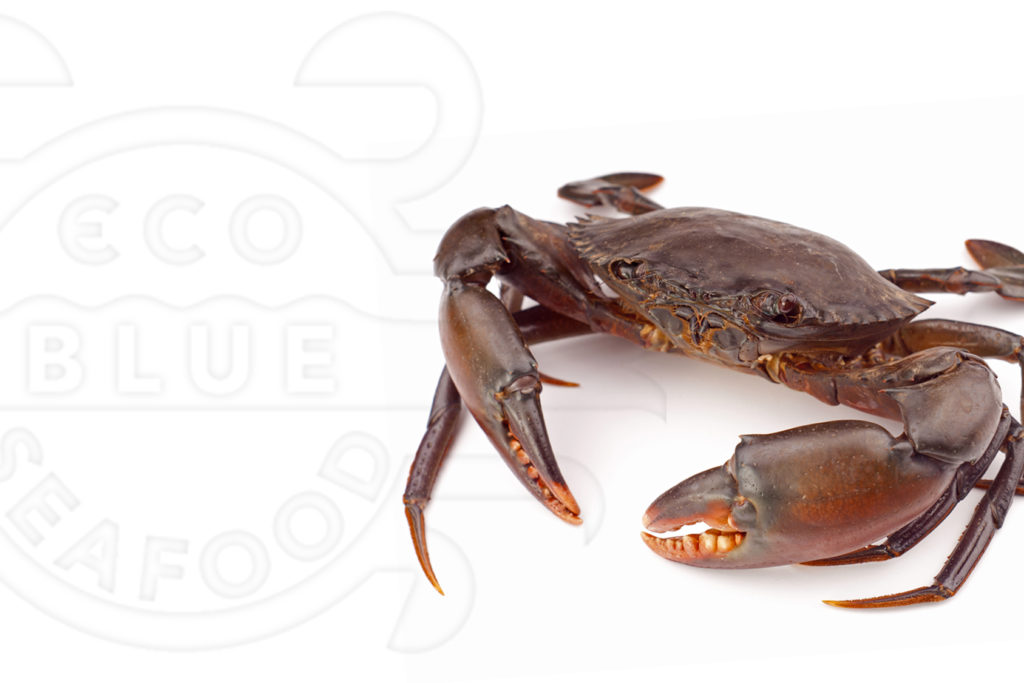Products
Giant Mud Crab (Scylla Serrata)
The Mud Crab is a species of crab that is found in the estuaries and mangroves of Asia, Australia, and Africa and is an economically very important crab species. It is also known as Scylla Serrata, Mangrove Crab, Giant Mud Crab. The Mud Crab is found in the wild from South Africa, around the coast of the Indian Ocean to the Malay Archipelago, as well as from southern Japan to south-eastern Australia, and as far east as Fiji and Samoa.
The coloration of the Mud crab is green to almost black with legs that may be marbled. They have small irregular white spots on the carapace and swimming legs. But in their most common form, the shell color varies from a deep, mottled green to very dark brown. The average shell width of the Mud Crab is up to 24 cm. and they can grow up to 3.5 kg live body weight. There are males and females and the female Mud Crab can produce up to 2 million eggs and these take a few weeks to hatch.
The Mud Crab is an economically very important species in its native range, and it is sold internationally at very high prices. Due to their high price and high demand, interest in aquaculture of this species has been high. Commercial Mud crab farming business is gaining popularity day by day. Mud Crabs have very high flesh content, and rapid growth rates in captivity and have proven to have a high tolerance to both nitrate and ammonia.
The Mud crab is mainly used for food and is a very popular delicacy, and especially the female Mud Crab, carrying eggs, is believed to have other valuable attributes in some cultures. It is generally cooked with its shells on.

Premium XL Product
Live Mud Crab is a specialty food, making them a highly demanded luxury food. Apart from being very tasty, the meat is also very nourishing and healthy, as it is low on fat, high on protein and rich in vitamins, minerals, Riboflavin B2 and Omega-3 long-chained fatty acids.
Eco Blue Seafood has a strong focus on branding of the production methods within the company’s aquaculture setup. Through relatively simple production methods and optimal composition of the bio-environment, we will be able to breed fresh organic fish and shellfish of the highest quality, which in turn will secure the best possible price in the market.
Throughout the Southeast Asian region, there is a focus on cash flow and quick revenue streams. This means that the grow-out or fattening phase is often shortened in order to be able to harvest as soon as possible. This results in much fiercer competition in the midsize segment (Max. 500 grams).
Because of this, Eco Blue Seafood has deliberately chosen to be more patient and to work with a longer and much healthier fattening phase, moving our Mud Crabs into the premium quality XL segment (700 grams and up), where prices are higher, and competition is less. Success in doing so demands full control of the entire value chain and a professional approach to branding, sales, and marketing.
